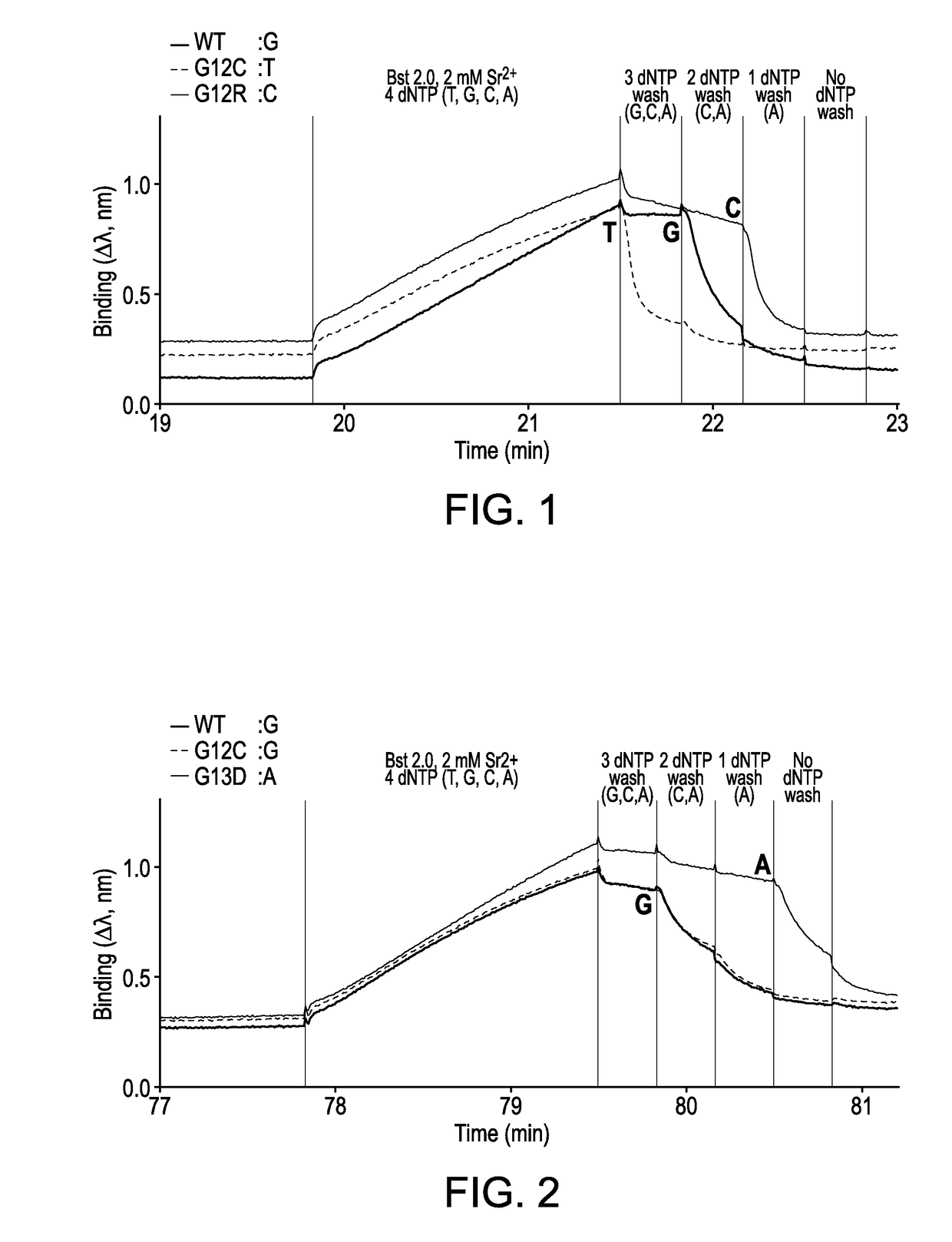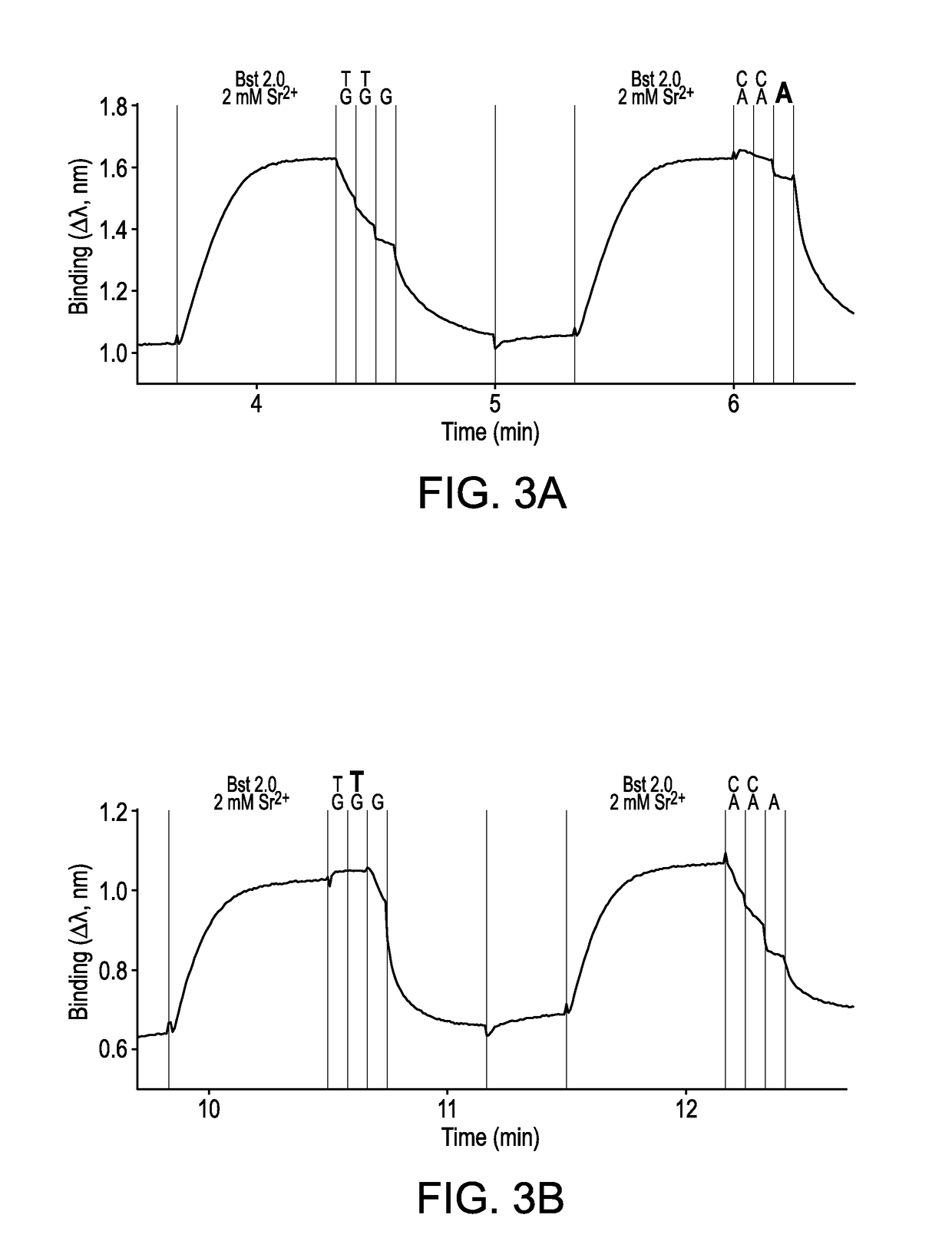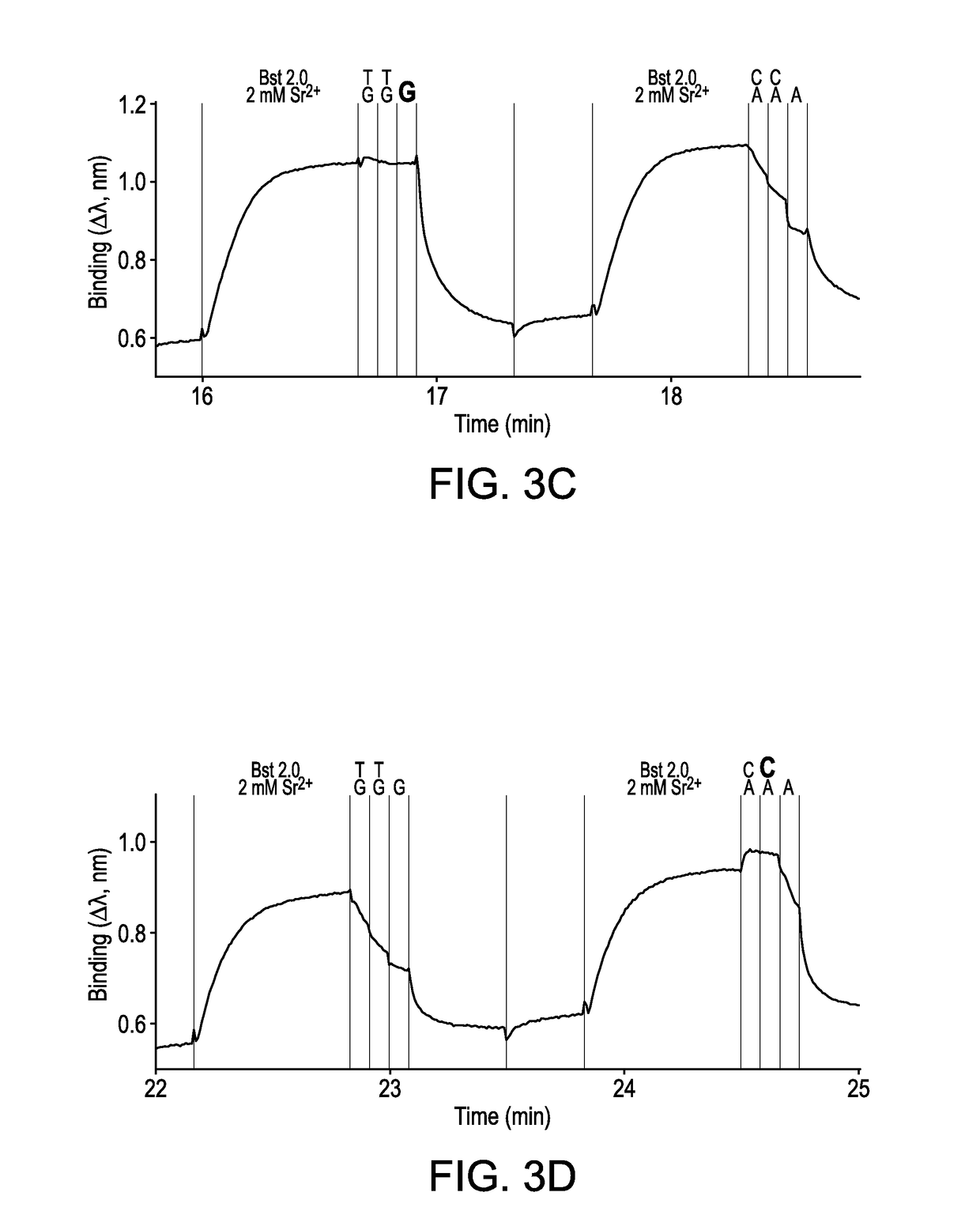Sequencing method employing ternary complex destabilization to identify cognate nucleotides
a complex destabilization and sequencing method technology, applied in the field of biotechnology, can solve the problems of complicated workflow, increased reagent cost, and sequencing methods further can experience “phasing” problems
- Summary
- Abstract
- Description
- Claims
- Application Information
AI Technical Summary
Benefits of technology
Problems solved by technology
Method used
Image
Examples
example 1
Sequencing-By-Binding Using Monitored Dissociation of a Ternary Complex
[0225]A FORTEBIO® (Menlo Park, Calif.) Octet instrument employing biolayer interferometry to measure binding reactions at the surface of a fiber optic tip was used in a multiwell plate format to illustrate the sequencing technique. Template strands biotinylated at their 5′-ends were used to immobilize primed template nucleic acid onto fiber optic tips functionalized with streptavidin (SA) according to standard procedures. Four different template sequences (i.e., wildtype, G12C, G12R, and G13D) were used to demonstrate interrogation of mutations in codons 12 and 13 of the KRAS sequence. Template sequences and targets were selected to exemplify detection of each of four different nucleotides by the procedure. Two different positions in the wildtype (WT) sequence were used for making comparisons. Relevant sequences were as follows, where underlining identifies the base position being interrogated.
Codon 12WildtypeGGT...
example 2
Preliminary Formation of Binary Complexes Followed by Formation and Dissociation of Ternary Complexes Identifies Cognate and Non-Cognate Nucleotides
[0232]A FORTEBIO® (Menlo Park, Calif.) Octet instrument employing biolayer interferometry to measure binding reactions at the surface of a fiber optic tip was used in a multiwell plate format to illustrate the sequencing technique. Template strands biotinylated at their 5′-ends were used to immobilize primed template nucleic acid onto fiber optic tips functionalized with streptavidin (SA) according to standard procedures. Four different template sequences (i.e., wildtype, G12C, G12R, and G13D) were used to demonstrate interrogation of mutations in codons 12 and 13 of the KRAS sequence. Template sequences and targets were selected to exemplify detection of each of four different nucleotides by the invented procedure. Two different positions in the wildtype (WT) sequence were used for making comparisons. Relevant sequences were as follows,...
example 3
Examination of a Primed Template Nucleic Acid Molecule Having a 3′-Blocked Primer in the Presence of Catalytic Concentrations of Magnesium Ion
[0241]A FORTEBIO® (Menlo Park, Calif.) Octet instrument employing biolayer interferometry to measure binding reactions at the surface of a fiber optic tip was used in a multiwell plate format to illustrate the sequencing technique. Template strands biotinylated at their 5′-ends were used to immobilize primed template nucleic acid molecule onto fiber optic tips functionalized with streptavidin (SA) according to standard procedures. A 3′-blocked primer was prepared by incorporating a cognate reversible terminator nucleotide that included a 3′-ONH2 blocking group, using Therminator DNA polymerase (New England BioLabs Inc.; Ipswich, Mass.) according to the manufacturer's instructions. A description of the reversible terminator nucleotide can be found in U.S. Pat. No. 7,544,794, the disclosure of which is incorporated by reference. Binding of incom...
PUM
| Property | Measurement | Unit |
|---|---|---|
| pH | aaaaa | aaaaa |
| pH | aaaaa | aaaaa |
| pH | aaaaa | aaaaa |
Abstract
Description
Claims
Application Information
 Login to View More
Login to View More - R&D
- Intellectual Property
- Life Sciences
- Materials
- Tech Scout
- Unparalleled Data Quality
- Higher Quality Content
- 60% Fewer Hallucinations
Browse by: Latest US Patents, China's latest patents, Technical Efficacy Thesaurus, Application Domain, Technology Topic, Popular Technical Reports.
© 2025 PatSnap. All rights reserved.Legal|Privacy policy|Modern Slavery Act Transparency Statement|Sitemap|About US| Contact US: help@patsnap.com



